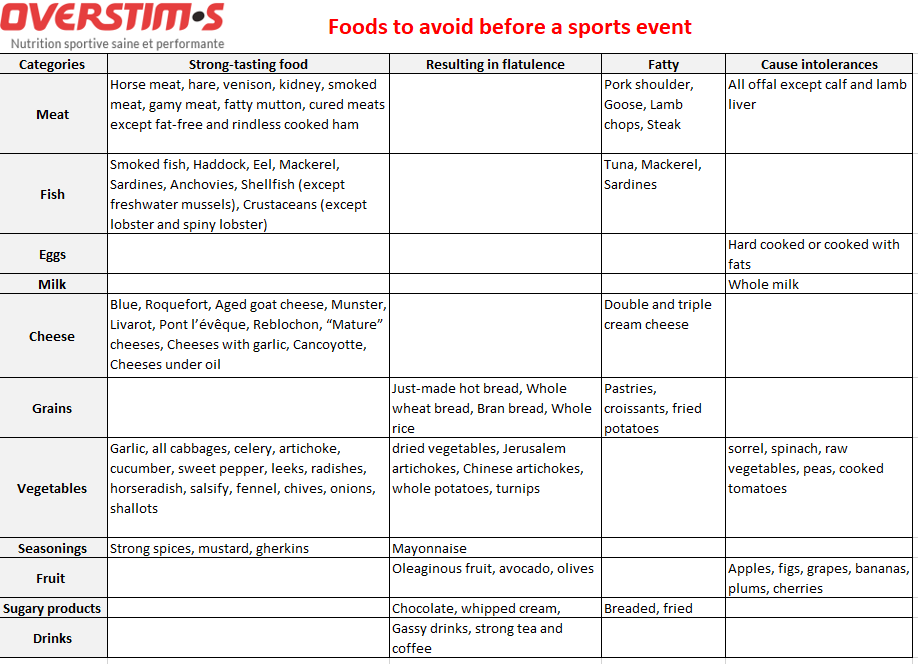In the world of sports, a reference diet for endurance has been in existence for many years: the Scandinavian dissociated diet.
In this article we will go into one of its variants that is much simpler to implement, and you will see that it is also quite effective!
Although there are many sports diets in existence, such as the ketogenic diet, the paleo diet or vegetarian diets, the Scandinavian dissociated diet remains the classic one which all sports neophytes should be familiar with.
Scandinavian dissociated diet or Modified Dissociated Diet?
You know the Scandinavian dissociated diet (SDD) that has been followed for almost 35 years. Its aim is to reduce the body’s glycogen reserves for 3 days in order to create a state where the body is depleted of them. Then we increase our intake of carbohydrates for 3 days so we produce an effect of overcompensating glycogen reserves to have plenty on the day of the race.
It turns out that the modified dissociated diet (MDD) meanwhile maintains a normal carbohydrate level for the first 3 days, then increases them the last 3 days with an almost identical effectiveness as the SDD (1). Moreover, from a practical point of view, the MDD is easier to follow and it limits possibilities for error if the dieter does not follow it strictly.
Here is the MDD protocol to implement:
- From D-7 to D-4: Maintain the normal amounts of carbohydrates consumed during meals, according to how you eat normally. However, choose low Glycemic Index (GI) carbohydrates, easily identifiable using the tool on the www.diabete.fr site (2). This includes grain bread, whole wheat or rye. Complete or semi-complete starches (rice, pasta, refined wheat, couscous, quinoa). Choose steamed or boiled sweet potatoes instead of potatoes.
Make sure you increase your intake of proteins and vegetables.
Add 2 tablespoons of extra virgin oil, rich in omega 3: rapeseed, linseed, walnut, gold of pleasure (cameline) oil cold on your vegetables/starches, and cook with extra virgin olive oil.
Between theory and realities, ambiguities
The SDD and MDD recommend increasing low GI carbohydrates by 1/3 the last 3 days. Now we bring back these last by eating more grains and fibre-rich whole starches. The problem was that pre-race nutritional recommendations encouraged a low intake of fibres in order to ensure comfortable digestion.
- D-4 to D-1: Increase you intake of carbohydrates by about 1/3 with medium/low GI ones. So how do we get these GIs without the fibre that comes with them? Here are some solutions:
- We can cook classic pasta “al dente”. We can undercook starches (basmati rice, quinoa, couscous, wheat, etc.), then eat them cold in salads, thanks to the starch retrogradation phenomenon, lowering the food’s GI (3).
- Starches should be served with easily digestible vegetables that are not part of the list below. The vegetables help reduce the GI of the starches eaten.
- You can also add 1 to 2 tablespoons of cold olive, rapeseed, linseed, or virgin walnut oil to the starches to reduce the GI.
- Cooking should be as simple as possible, without any spices, herbs or condiments, and little fat.
- Below is a recommendation table of foods to limit.
- Drink 2L of water a day.
- D-1: Eat normally, being careful to eat foods you have a good digestive tolerance for. Do not try out any new foods (at a restaurant, for example). Do not consume alcohol, which could have a dehydrating effect.
The role of Maltodextrin in the modified dissociated diet
3 days before the event, we recommend consuming a drink based on Maltodextrins, for several reasons:
- To complete intake of carbohydrates for the MDD without having to increase portions of starches.
- To prevent excessive consumption of carbohydrates to avoid intestinal fermentation that causes bloating, discomfort, sleep disturbance and increased risks of faster digestion during the event.
- To ensure an ideal hydration level (Maltodextrins involve swallowing from 1.5 to 2L of water a day).
- To intake antioxidants (Vitamin C) in some Maltodextrin-based drinks. Vitamin C plays a role in prevention against oxidative stress connected to the sports event.
Final advice, vegetables to limit before a competition
This non-exhaustive list identifies the vegetables that could cause digestion problems for events, and you should therefore avoid them before an event:
Garlic, all cabbages, celery, artichoke, cucumber, sweet pepper, leeks, leek greens, radishes, horseradish, salsify, fennel, chives, onions, shallots, dried vegetables, Jerusalem artichokes, Chinese artichokes, whole potatoes, turnips, sorrel, spinach, raw vegetables, peas, cooked tomatoes
References:
(1) According to the study by Sherman et. al. (1981) the glycogen content of the gastrocnemius (or more commonly called “calf”) practised by muscle biopsy punctures differ little between the SDD (210 μmol.g-1) and the MDD (204 μmol.g-1).
(2) Glycemic index: http://balance-glycemique-diabete.timelab.fr/balance
(3) When an amylase food is cooked and cooled, it produces the starch retrogradation phenomenon that lowers the food’s GI.
